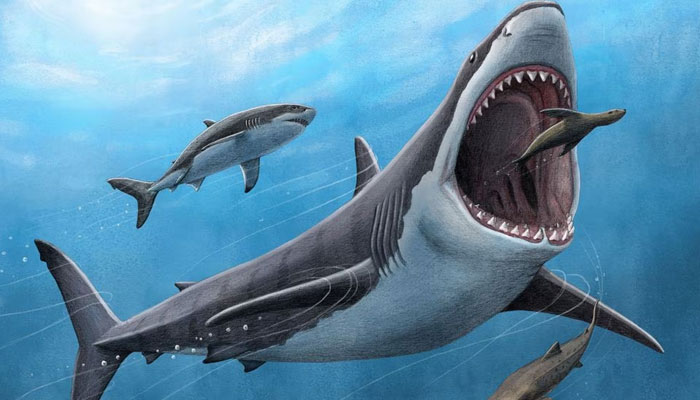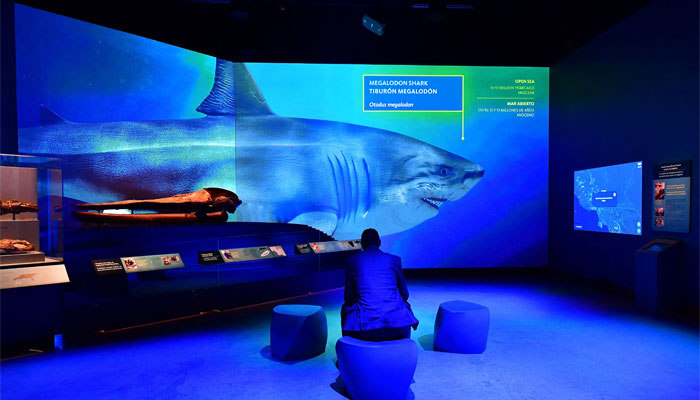Megalodon matters: Some 'warm' facts about ancient sea beast come to surface
"Though megalodon was quite bit warmer than both of these modern apex predators, making it unique," says author
June 28, 2023

Megalodon, an ancient sea predator, known for its stupendousness and ferocity, is currently under extensive study and scientists, who have recently examined its 7-inch-long teeth rather closely, have got some warm insight to offer on this mysterious marine beast of the old world.
Scientists have been able to acquire full comprehension of this extinct creature by analysing the mineral makeup of their enamel-like tissue confirming that the ocean giant megalodon was warm-blooded.
According to research — published in the journal Proceedings of the National Academy of Sciences — the 50 to 65 feet long sea predator’s downfall was caused by this particular trait alongside its tremendous success.
The estimates from the researchers suggested that megalodon boasted an overall average body temperature of about 81 degrees Fahrenheit (27 degrees Celsius) and could keep it at about 13 degrees F (7 degrees C) above that of the surrounding seawater.
Due to this, megalodon may have been a more dynamic predator with strong swimming and the ability to digest food in an energetically efficient manner and, importantly, tolerate colder water, allowing it to extend worldwide.
Most fish are cold-blooded — ectothermic — with body temperatures matching the surrounding water. However, some are warm-blooded — endothermic such as the great white shark.
"The only comparable living species today in terms of both diet and body temperature are the great white shark and, to a lesser extent, the mako shark," said the lead author of the study and paleoclimatologist Michael Griffiths of William Paterson University in New Jersey.

"Though, as shown in our study, megalodon was quite a bit warmer than both of these modern apex predators, which makes megalodon unique."
The study found that megalodon, while warm-blooded, had a lower body temperature than whales.
"One theory is that they were regionally endothermic — that some parts of their body were warmer than other parts, whereas body temperature is higher and more uniform across the body in most large mammals," study co-author Robert Eagle said.
Megalodon, perhaps the largest shark of all time, appeared about 23 million years ago, then disappeared about 3.6 million years ago amid declining ocean temperatures and sea levels.
Warm-bloodedness could have been useful for megalodon in cooling waters.
Another co-author Kenshu Shimada of DePaul University in Chicago said: "Yet, the fact that the species became extinct suggests the probable vulnerability — or the cost — of being warm-blooded because warm-bloodedness requires constant high food intake to sustain high metabolism."
"It is quite possible that there was a shift in the marine ecosystem due to the climatic cooling that caused the sea level to drop, altering the habitats with the populations of the types of food megalodon depended on, such as marine mammals, possibly becoming scarce, leading to the extinction of megalodon," Shimada added.
The researchers analysed geochemical characteristics in fossil megalodon teeth to determine the temperature at which minerals in enamel-like tissue formed — an indicator of body temperature.
The ancient ocean predator was ignored but is now in the spotlight due to the 2018 film "The Meg" and its upcoming sequel "Meg 2: The Trench."
"Megalodon is primarily represented only by teeth and a handful of vertebral specimens in the fossil record," Shimada said.
"Contrary to novels and movies that portray megalodon as a super-sized, monstrous shark, the fact is that we still don't even know exactly how it looked or how it lived. This is exactly why the 'science of Megalodon' continues to be an exciting academic field."











